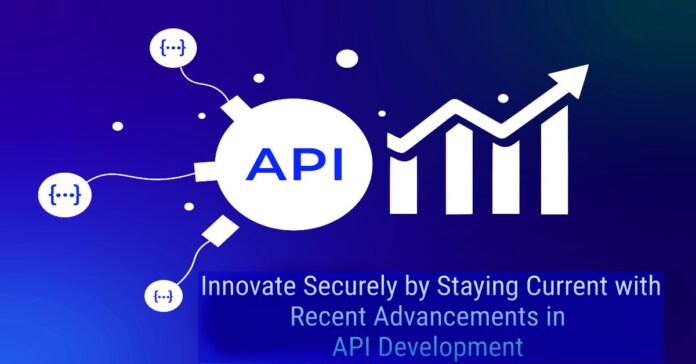In January 2024, the tech community was shaken by massive API breaches on platforms like Trello, the go-to project management tool, and Spoutible, a rising Twitter alternative.
- Trello faced a serious issue when private email addresses were exposed, enabling hackers to create detailed data profiles for over 15 million users.
- Similarly, Spoutible’s API security flaw compromised account information, including email addresses and bcrypt-hashed passwords, affecting approximately 207,000 users.
And these are just two of the many sophisticated attacks that have happened!
These incidents underscore a harsh reality: no platform is completely safe from cyber-attacks happening everywhere. Considering this a wake-up call, many companies are now emphasizing the urgent need for stronger API security to protect user and company data, ensuring trust in digital systems. In this context, let’s go over some of the most significant trends in API development, focusing on security and integrity.
2024’s Most Influential API Development Trends
Trend #1: Prioritizing Inside-the-Perimeter Threat Detection for APIs
Earlier, preventing malicious attackers was a sufficient security strategy. However, merely stopping them from entering the perimeter is now less than half the battle. Traditional perimeter-based solutions often only monitor requests, not responses. This means if an unauthorized actor poses as a legitimate customer, their API requests can pass off as normal.
This brings us to our first and one of the most vital trends in API development – inside-the-perimeter threat detection with a multi-layered approach. As hackers continue to come up with innovative attacks, 100% visibility and fidelity of APIs become necessary to identify and exclude fishy API requests.
Consequently, many organizations are combining traditional methods (firewalls, reverse proxying, rate limiting, etc.) with advanced inside-the-perimeter techniques (micro-segmentation, intrusion detection, entity behavior analysis, etc.).
Trend #2: Shifting towards an API-First Strategy
As per a Stack Overflow survey, over 72% of software developers believe API-first designs to be one of the most essential elements of modern applications. Aligning with this belief, many organizations have adopted an API-first strategy, bringing us to the next API development trend that is here to stay.
How does this strategy work? It involves designing and developing APIs before building other components of an application. This approach supports the iterative and gradual development of more modular, scalable, and easily integrable systems.
Moving forward, organizations will continue to utilize APIs for seamless connectivity and functionality.
Trend #3: CIOs Emphasizing API Governance to Avoid Technology Sprawl
Another significant trend in API development is the growing emphasis on API governance.
While APIs have become imperative to contemporary technology strategies, their utilization can create complex management and maintenance challenges. Most companies now hold extensive API portfolios, including internal services, payment gateways, and other third-party SaaS providers.
However, extensive reliance on APIs necessitates additional efforts to ensure design consistency, manage costs, and address the heightened security risks of increasing API endpoints.
As a result, CIOs are backing up meaningful API governance to keep things under control. They’re burgeoning on comprehensive governance programs with pre-defined frameworks, API bandwidth, security protocols, and compliance requirements.
Trend #4: Increasing Use of Banking APIs in FinTech
Another prominent trend in the API development segment is the rise of open banking. It is a recent practice that allows banks and financial institutions to share consumer financial data with third-party providers through secure banking APIs.
Why is it becoming a prominent practice? To offer greater financial transparency, enabling other service providers to devise new services and policies. As of 2023, there were approximately 102 billion banking API calls, and it’s expected to reach 580 billion by 2027!
(Source)
This growth underscores the increasing utilization of custom, secure banking API development, highlighting the critical role APIs play in modern financial services. Looking ahead, open banking will continue to drive innovations in financial products and enable the integration of various banking services for a streamlined experience.
Trend #5: Moving Towards a Strategic Integration of AI and APIs
Moving on to the next API development trend – the growing recognition of the intertwined relationship between AI and APIs for strategic integration.
The relationship between APIs and AI is a dynamic interplay that influences security and innovation. On the one hand, AI has increasingly been used in API development pipelines, expediting the entire process. Conversely, it has also introduced more risk. Without adequate risk mitigation techniques, AI integration can lead to the proliferation of inconsistent designs and inadequate code. Additionally, AI has enabled hackers to experiment and launch increasingly complex API attacks.
Understanding this interplay is crucial to balancing AI expansion in API development with the increasing security concerns it introduces.
Trend #6: Leveraging GraphQL as an Alternative to REST APIs for Efficient Data Querying
Many organizations are using GraphQL as an alternative to REST. This trend in API development is driven by GraphQL’s compelling advantages in terms of efficiency and flexibility.
Unlike REST, where clients typically work with fixed data structures, GraphQL allows clients to specify the required data points. This minimizes the issues related to over-fetching (retrieving more data than needed) and under-fetching (not getting enough data) that often occur with REST APIs.
That said, REST APIs are still prominently used. Moving forward, you can expect both technologies to grow.
Wrapping it up
As APIs remain vital to modern systems and applications, the focus on securing them will only intensify. Organizations will likely adopt more robust techniques, from inside-the-perimeter threat detection to comprehensive API governance, to monitor and scrutinize all API requests. Looking ahead, the integration of AI, the rise of open banking, and the shift toward GraphQL highlight exciting API development trends that promise to enhance functionality and security. They will enable more seamless and innovative digital interactions. The future holds challenges and opportunities, and staying vigilant will be the key to staying in the race. What new advancements and solutions you’ll see next? Only time will tell.




















